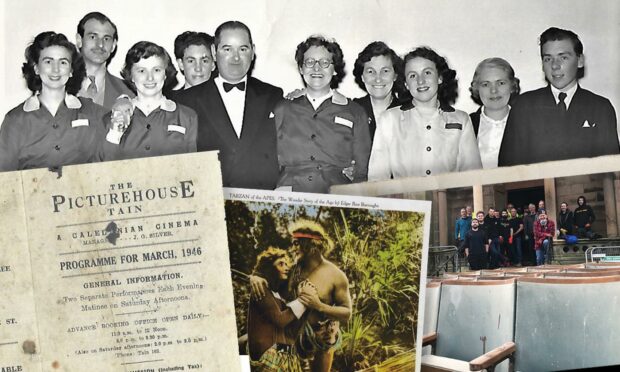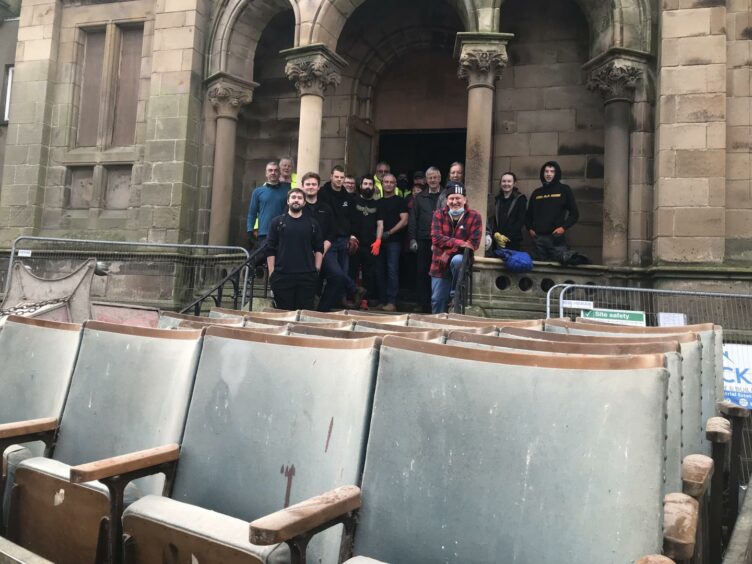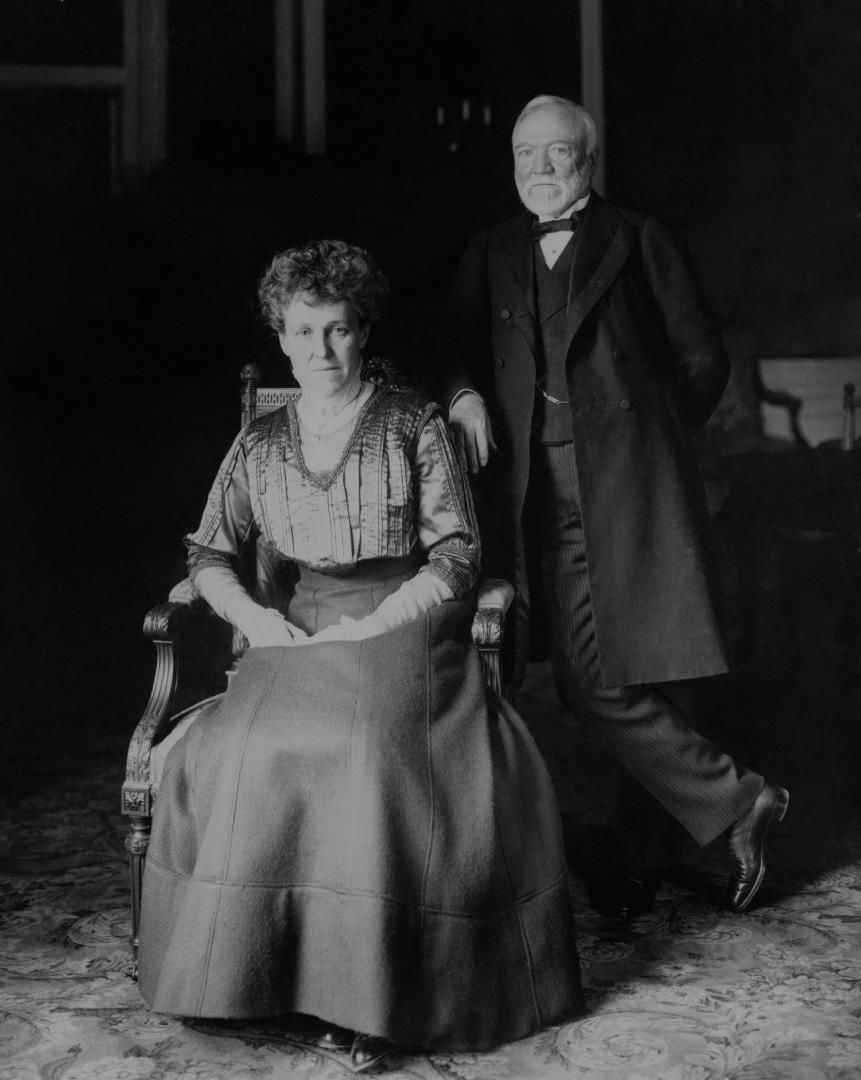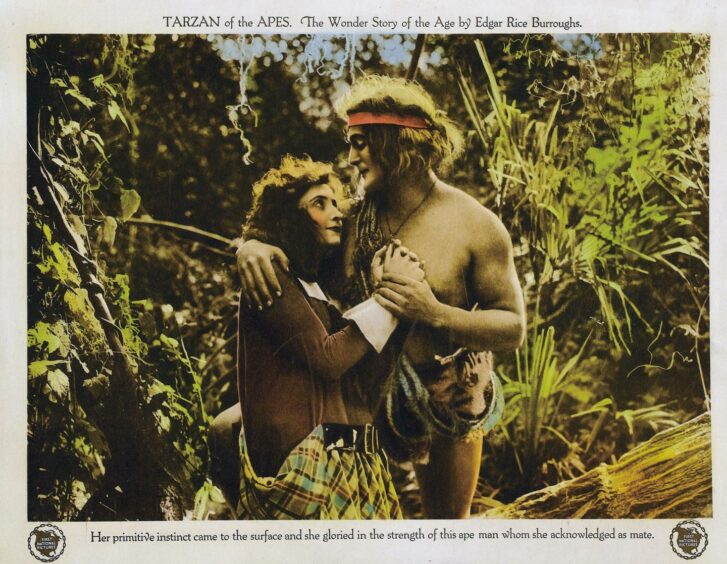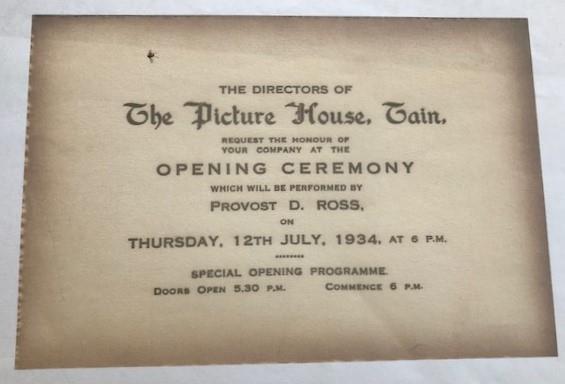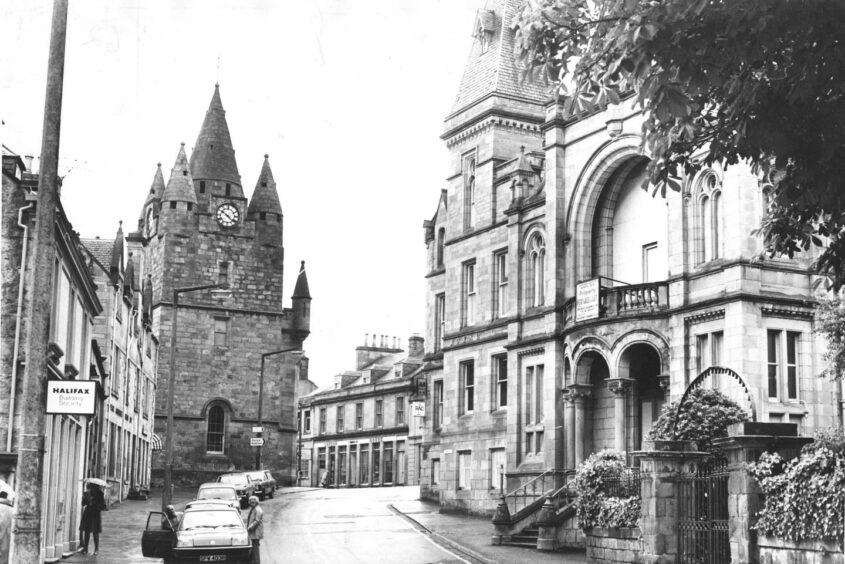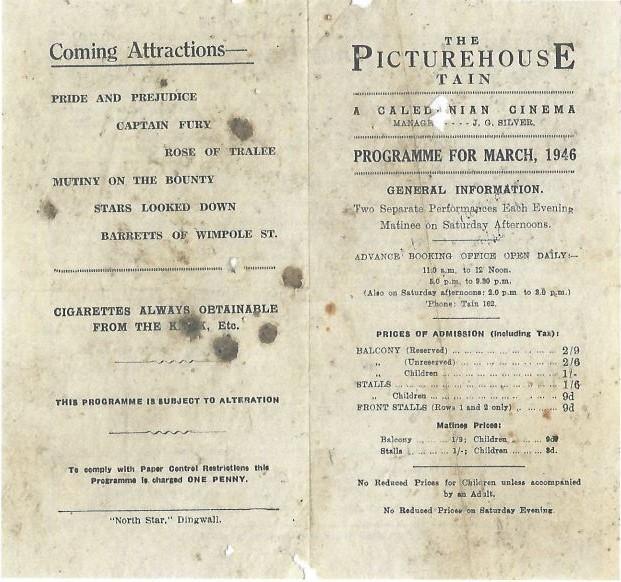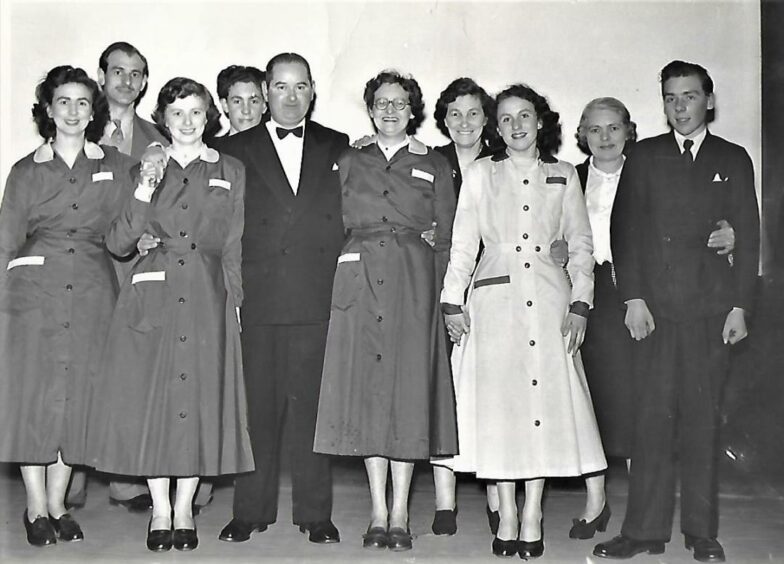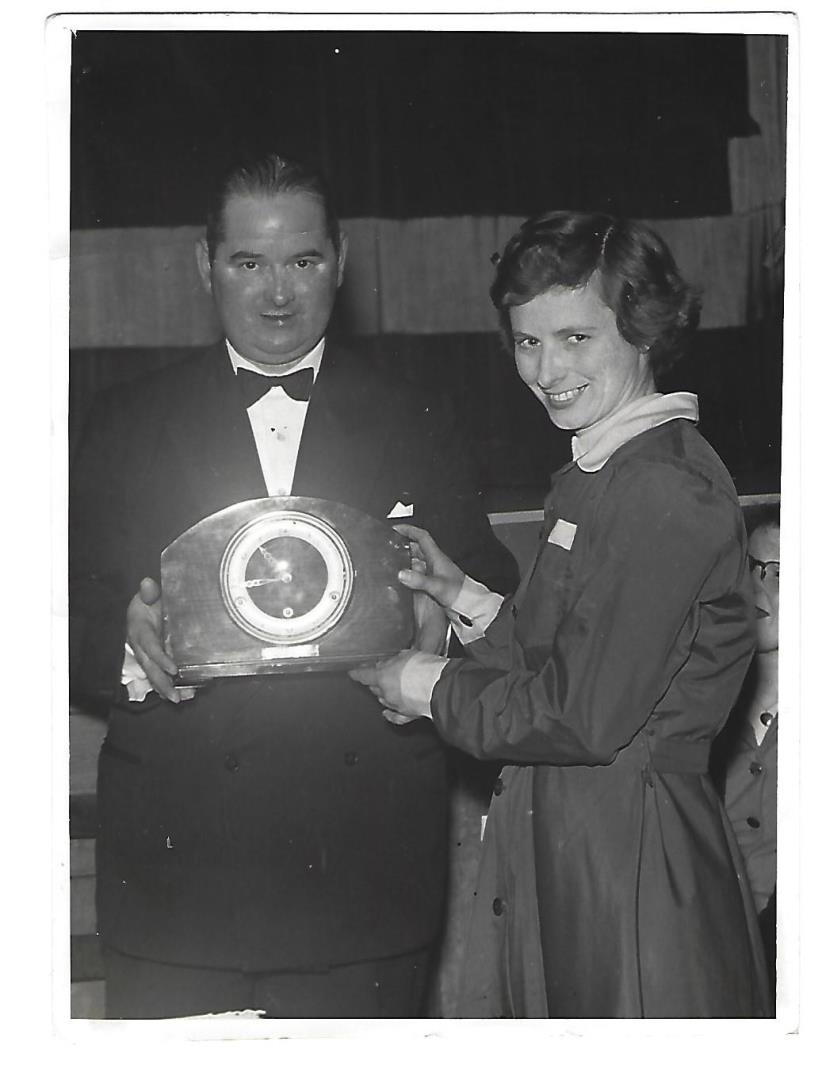It’s all hands on deck at Tain’s old Picture House as community-led restorations move ahead to bring the fine building on Tower Street back to life.
Volunteers have taken out the old cinema seats, staging and lighting to allow for the rotting timber flooring to be taken out and replaced with a concrete floor.
At that point, the building’s doors will be open to the public for the first time since 1964, when the much-loved Picture House was closed and tickets cost five bob.
The 145-year-old building dates well before moving pictures.
It was designed by Andrew Maitland & Sons in the French Renaissance style all the rage at the time, and cost £2,750, around £333,000 in today’s money.
It was first a public hall, also used as a theatre.
It was then acquired by the town council to serve as a Town Hall from 1903, by which time it was in a poor state of repair.
The philanthropist Andrew Carnegie, ensconced nearby at Skibo Castle, funded its refurbishment in great decorative detail.
Its reopening, by Mrs Carnegie, saw a massive gala in the town during which every shop and hostelry was bedecked with banners and streamers celebrating ‘Carnegie Day’.
The hall started showing pictures in the 1920s, including ‘The World’s Wonder Picture’, Tarzan of the Apes in 1921.
By 1934 it had become a full-time picture house.
That Christmas, 400 children were treated to a free show with Alice and Wonderland as the main attraction, each child leaving with a ‘nice gift from a benevolent Santa Claus’.
The cinema’s popularity was sealed.
In due course, the Picture House became a second home to teenager Janet Walker from Cadbol Mount farm in Fearn, and later of Morangie Farm, Tain.
Born in 1928, she left Tain Academy at 14 and a couple of years later got a job at the Town Council-run Picture House.
Janet, now 93, recalls a very busy house and many happy times during her 14 years at the cinema.
“There were two showings, first and second houses, and I took the tickets as people went in.
“I remember the queues stretched down as far as the St Duthus and no one could get in after 10 minutes from the start of the show.
“It was full houses every night, buses came in every night from Portmahomack and Balintore, and on a Saturday and Wednesday from Nigg.
“Lots of people cycled; for example, from Edderton. I had a friend who lived there and she would call for me and we would cycle in to Tain together.”
Janet’s aptitude for arithmetic ensured her rapid promotion.
She recalls: “There was an outbreak of foot and mouth disease at Aldi Farm where the cashier at the time was Ina MacPherson.
“She was not allowed to leave the farm even to go to work.
“The manager, Mr Nairn, needed to find a replacement quickly as the Picture House was so busy and I was known to be very good at sums.
“So before I was 15, I was responsible for all the cashier’s duties, this was in the days of pounds, shillings and pence and different prices for adults and children and for balcony seats.”
Things got even busier for Janet as gradually the sale of cigarettes, popcorn and nuts were introduced.
Janet was entrusted with the banking and monthly returns for the next 14 years until she got married in 1958.
Needless to say, the Picture House was very popular with courting couples, Janet says.
“Steady couples used to book corner seats on the balcony. Women especially did not go to pubs in those days and cars were rare so the cinema was the place of choice!”
Reserving seats up until the early ’50s wasn’t as convenient as online bookings are nowadays.
Janet said: “A Mr Shand had a bookshop opposite the Balnagown Hotel and bookings were taken there.
“Before I came to work I had to call at his house in Cadboll Place to pick up the sheet of bookings.”
The phone arrived at the Picture House in 1955 and Janet even remembers the number: Tain 162.
Toilets were also a problem – there weren’t any at the Picture House, so men had to go out to the Royal Hotel to use theirs, and often profited from the moment to have a fly half.
What ladies did is not recorded.
The cinema employed a lot of people – three usherettes, three on the ‘box’, two cleaners, a doorman to keep the lively queues in order, a manager and a cashier.
Janet remembers some of the old names – Connie Hood, Mary Forsyth, Mary Thomson, Nancy Ross, Alistair Ross, and operators Alec Ferguson and Ian ‘Blackie’ Ross.
Janet said: “It was a great job for them, as they saw all the films. I think they went off to do National Service.
“Ian came back to Tain after service in the Navy and opened a radio shop in Academy Street.
“His wife Esna also worked at the Picture House for a time.”
Janet says she’s looking forward to a visit to the old booking office when the present works are finished, as it’s being retained as part of the restoration.
One memorable night in 1937, a car parked outside the Royal Hotel by a lady from Culbokie in the Black Isle who’d driven over to see a picture proved too much temptation for the hotel ‘boots’, Norman Sinclair Moir, who made off with it.
Unfortunately, it broke down in Kildary and Moir gave the game away when he phoned the garage in Tain for assistance.
Moir found himself up before the sheriff and fined £5.
Changed days – the case made quite a splash, reported as the first of its kind in Tain Court.
In 1944 the picture house was sold to its tenants, Tain Picture House Company, for £4,000.
It was later operated by Caledonian Associated Cinemas, and closed by them in 1964.
More like this:
How Dundee actress sang her way into spotlight in The Wicker Man
